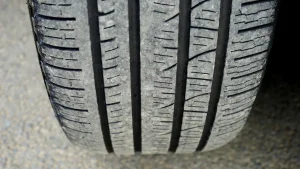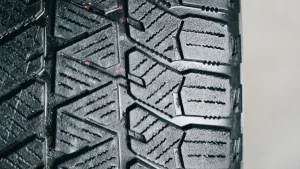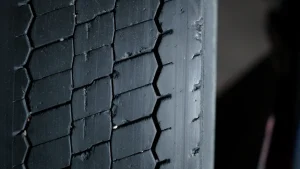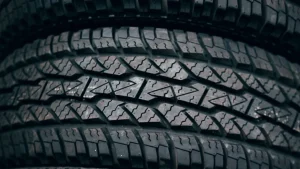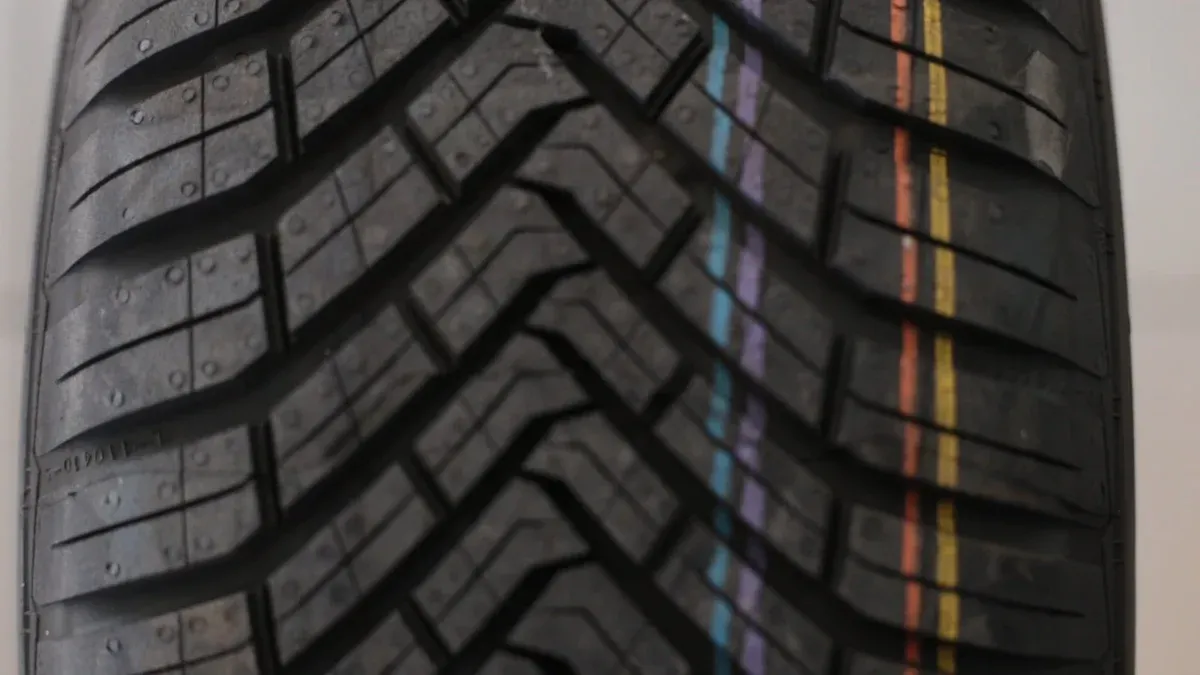
When you drive in winter, tire tread depth is very important. A handheld car-tire tread tool helps you measure tread depth easily. It gives you quick feedback and accurate readings. These tools help you check if your tires are safe for snowy roads.
Hlavní poznatky
Check your tire tread depth often. This helps keep you safe in winter. Aim for at least 4/32 inches for good grip on snow and ice.
Použijte handheld car-tire tread tool to measure accurately. This tool helps you know when to replace your tires.
Know what tread depth readings mean: if it’s below 2/32 inches, you need new tires. Checking regularly can stop accidents and make driving better.
Importance of Winter Tire Tread Depth
Traction and Safety
When you drive in winter, having enough tread depth is very important. It helps your tires grip the snow and ice. You might not know this, but how deep your tire tread is can change how well your car holds the road. Here’s why it is important:
Better Grip: Winter tires have deep grooves and channels. These features help them grip the road better. They dig into snow and give a larger surface area for better grip on ice. When tread depth gets lower, your tires can’t hold traction as well. This leads to longer stopping distances and a higher chance of skidding.
Brzdná dráha: Did you know that less tread depth can cause a 14% drop in snow traction? This means if your tires are worn, you may need more space to stop safely. For example, stopping distance increases by 7% on wet roads when driving at 60 mph. On icy roads, even a small loss in braking can greatly change your stopping distance from just 10 mph.
Accident Statistics: Not having enough tire tread can lead to serious problems. Every year, winter driving accidents cause about 1,836 deaths and over 136,000 injuries. During snow or sleet, around 900 people die, and 76,000 get hurt. These numbers show how important it is to keep your tires in good shape for safe winter driving.
Legal Recommendations
Knowing the legal rules for winter tire tread depth is important for all drivers. Different places have different laws, but here are some key points to remember:
Minimální hloubka dezénu: In North America, the lowest recommended tread depth for winter tires is 4/32 inches (about 3.2 mm). This depth is very important for your tires to work well in winter.
International Standards: Laws can be very different in other countries. For example, in Germany, the legal minimum tread depth for winter tires is 1,6 mm, but 4 mm is best for good performance. In Japan, many areas require winter tires or chains when roads are icy. Tires must be changed if tread depth is worn down by more than 50%.
Insurance Implications: Remember that insurance companies often check claims for accidents caused by low tire tread. If your tires are worn and cause an accident, your claim might be denied because of ‘unroadworthy vehicle’ rules.
By knowing the importance of winter tire tread depth and following legal rules, you can stay safer on the road and lower the chance of accidents during winter driving.
Using a Handheld Car-Tire Tread Tool
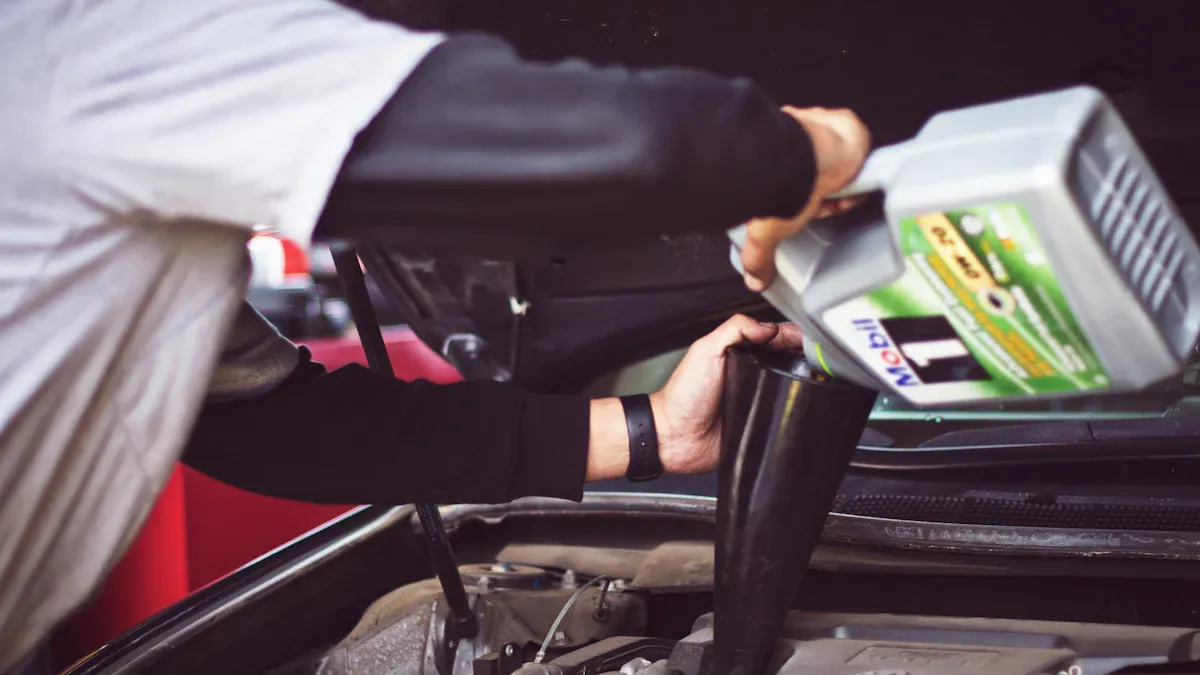
A handheld car-tire tread tool is a great tool for checking your tire tread depth. It is made for easy use and accuracy. This makes it simple for you to check your tires without guessing. Here are some important features that make this tool essential for winter tire checks:
Funkce | Popis |
|---|---|
Accurate Readings | Helps you replace tires on time for safety and to save money. |
Data Import | Lets you connect with fleet management systems to track and analyze tire wear. |
Convenience | Made for easy use, allowing quick checks without guessing. |
Profiled Contact Tip | Helps you reach tight spaces between treads for accurate readings. |
Measurement Process
Measuring tire tread depth with a handheld car-tire tread tool is easy. Follow these steps to get accurate readings:
Pull the plunger all the way out.
Push the plunger down, but do not press on the wear bar. This measures the total tread depth.
The plunger will stop; make sure the outer stopper part on the case touches the tread face.
Take the tool off and read the measurement. Most gauges show both imperial and metric values.
This method helps you get reliable results every time. The advanced scanning technology in these tools gives clear images of your tire tread conditions. They measure tread depth accurately, reducing mistakes and ignoring things like wear bars or stones that could cause wrong readings.
Tips for Accurate Use
To get the best tread depth readings, follow these best practices:
Use the ‘zone method’ to take 12 to 16 separate measurements across a larger area of the tire tread.
Record your results and find the average of all measurements. This will help you see your tire’s health better.
Regularly check and track your tire tread depth to ensure safety and performance.
By using these tips, you can confidently check your tire tread depth and make sure your tires are ready for winter driving. Remember, watching your tire condition can greatly improve your safety on the road.
Checking Winter Tire Tread Depth

Understanding Tread Depth Readings
When you check your tire tread depth, understanding the numbers is very important for your safety. Here’s how to understand the readings:
2/32 inches (~1.6 mm): This is the lowest tread depth suggested by the U.S. Department of Transportation. Many states say you must change your tires at this depth.
5/32 to 6/32 inches (~4 to 5 mm): For the best safety in winter, aim for this range. It helps your tires grip better on snow and ice.
Below 2/32 inches: At this level, your tires can break apart. You might have longer stopping distances, especially on ice. For example, if your tread depth goes from 6/32 to 4/32 inches, your stopping distance could grow by up to 50 feet!
Replacement Guidelines
Knowing when to get new tires can keep you safe. Here are some tips to help you decide:
Check regularly: Make checking your winter tire tread depth a regular part of car care. If your tread depth is at or below 2/32 inches, it’s time for new tires.
Consider performance: If you drive in snow, change your tires when they reach 5/32 inches. This depth helps keep traction and improves stopping power.
Environmental impact: Worn tires can release harmful particles that hurt air quality and add to microplastic pollution. Changing tires at the right tread depth keeps you safe and helps the environment.
By understanding tread depth readings and following these replacement tips, you can make sure your tires are ready for winter driving. Regular checks will help you stay safe on the road.
Common Mistakes to Avoid
Misreading the Tool
One common mistake is misreading your tread depth tool. Many car owners only look at tread wear bars to check tire health. These bars can help, but they can also trick you, especially with winter tires. If the tread is level with the wear bars, you only have 2/32 palce left. That’s not enough for safe winter driving!
To avoid this mistake, use a měřič hloubky dezénu for exact measurements. You can also do a simple test na penny. Turn a penny upside down and put it into the tread. If you see all of Lincoln’s head, it’s time for new tires. This method gives you a better idea of your tire’s condition.
Ignoring Tread Wear Patterns
Another mistake is ignoring tread wear patterns. Uneven wear can show serious problems with your tires. For example, if you see wear in the center, your tires might be overinflated. Edge wear means they are underinflated, while uneven wear could mean misalignment.
Checking for these patterns regularly is important for safety. If you notice any strange wear, it’s best to have your tires checked. This can help prevent accidents and make sure your tires work well in winter. Remember, watching your tires can really improve your driving experience.
Checking your tire tread depth often is very important for your safety in winter. Make sure to look at your tires regularly. They should be much deeper than the legal minimum of 1.6mm. Here are some easy tips to remember:
Change your tires when the tread depth is less than 2/32″.
Plan for professional checks to keep your tires working well.
By doing these checks regularly, you can stay safer and make your tires last longer.
Často kladené otázky
What is the best way to check tire tread depth?
Můžete použít handheld tread depth tool or the penny test to check your tire tread depth easily.
Jak často bych měl kontrolovat hloubku dezénu pneumatiky?
Pravidelně kontrolujte svůj dezén pneumatik at least once a month or before long trips to ensure safety and performance.
Kdy bych měl vyměnit své zimní pneumatiky?
Replace your winter tires when tread depth reaches 4/32 inches or less for optimal safety on snow and ice.
Viz také
Ovládnutí měřičů hloubky dezénu pneumatik pro přesná měření
Porozumění chytrým detektorům hloubky dezénu pneumatik a jejich funkčnosti
Důležitost sledování hloubky dezénu pneumatik pro bezpečnost

